Drosera ramellosa Lehm.
From the Latin, ramus (branch; here a comparative meaning much branched), in reference to the erect, leafy major axis innovations which arise from the basal rosette of leaves.
Western Australia – known to be a widespread species, from Kalbarri southwards to Cranbrook and eastwards to Mt Ragged, east of Esperance. Large populations commonly occur on the aprons of granite outcrops in inland regions.
Grows in saturated, winter-wet, grey sandy soils, clayey sand soils or red loam soil amongst low shrubs on the shores of lakes, floodways, watersheds and creek margins; as well as in moss on the aprons of granite outcrops, especially where the rainfall run-off is the greatest.
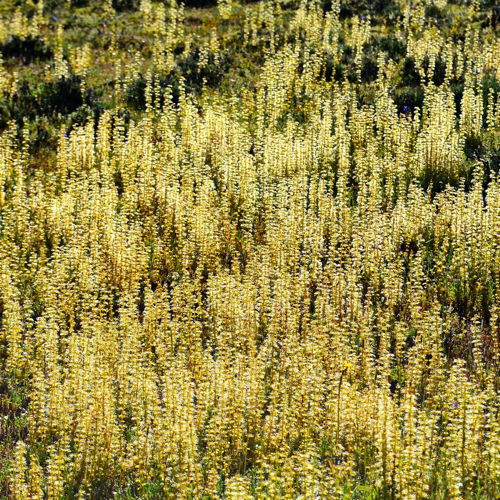
Drosera ramellosa. Photo © Thilo Krueger.
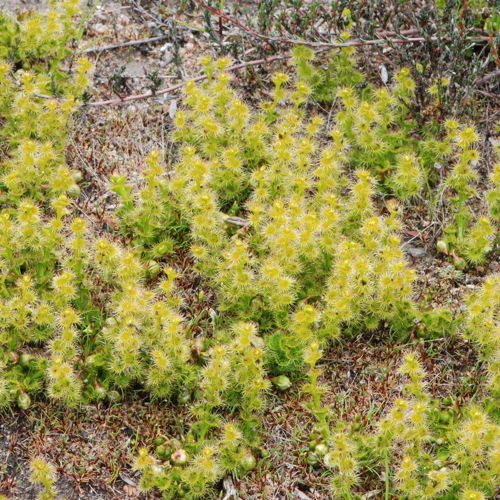
Drosera ramellosa. Photo © Richard Nunn.
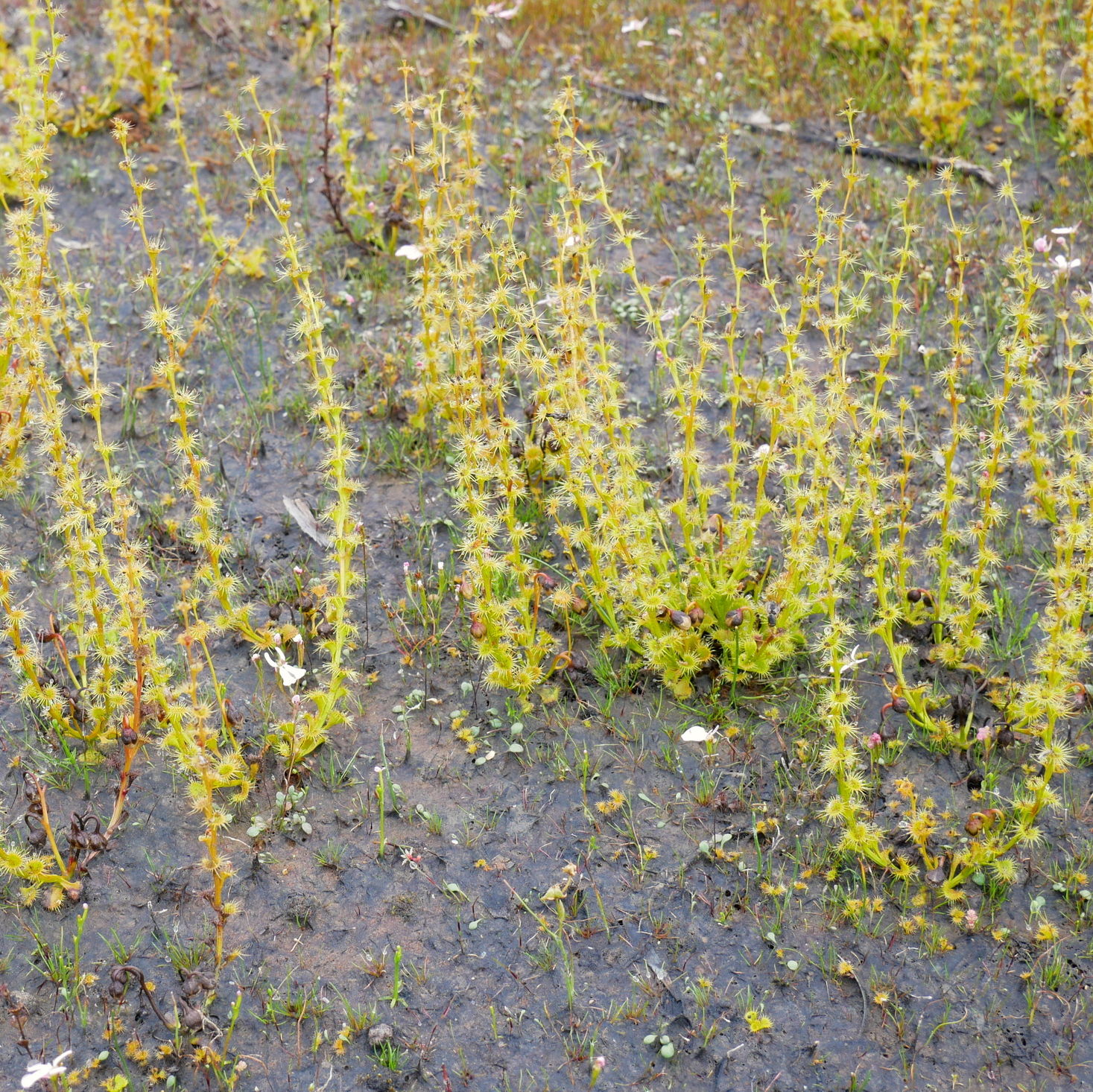
Drosera ramellosa. Photo © Thilo Krueger.
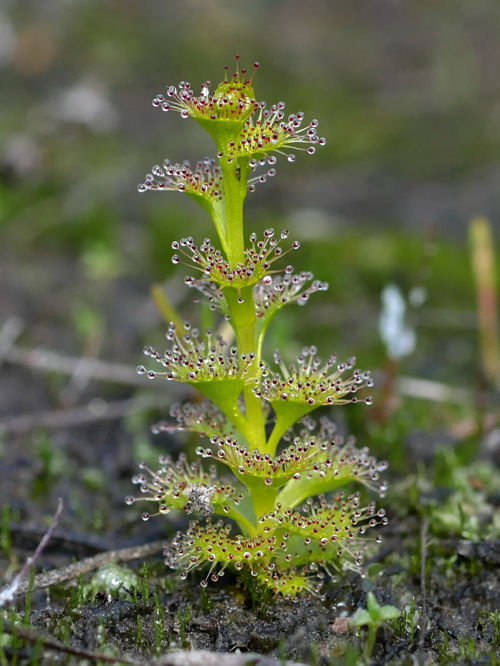
Drosera ramellosa. Photo © Thilo Krueger.
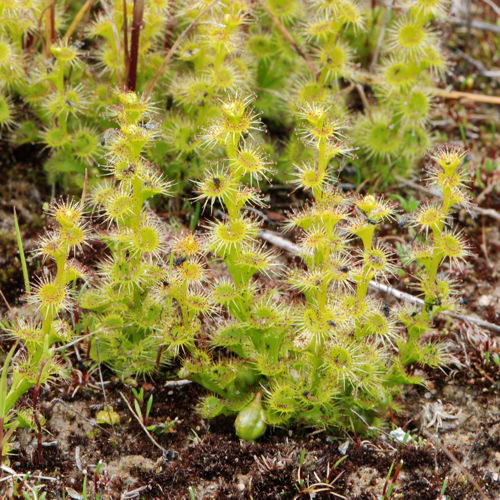
Drosera ramellosa. Photo © Richard Nunn.
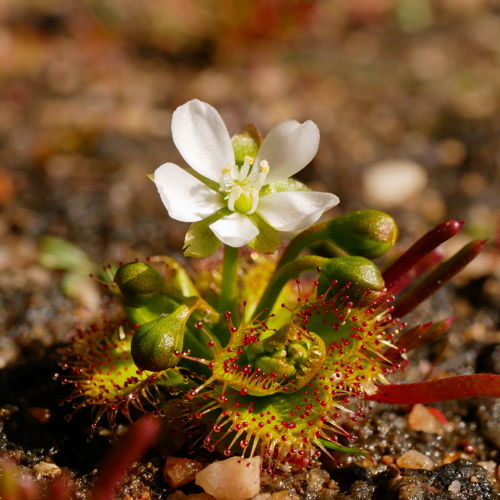
Drosera ramellosa. Photo © Thilo Krueger.
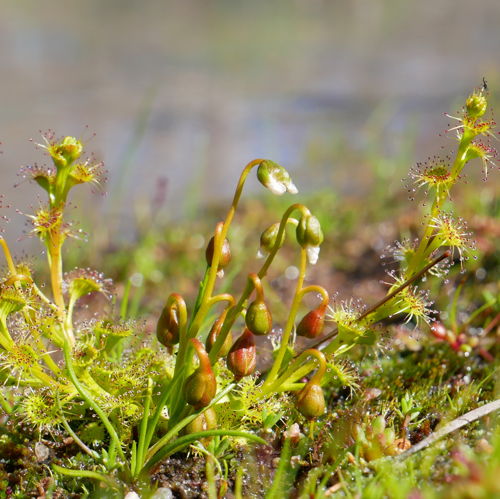
Drosera ramellosa. Photo © Thilo Krueger.
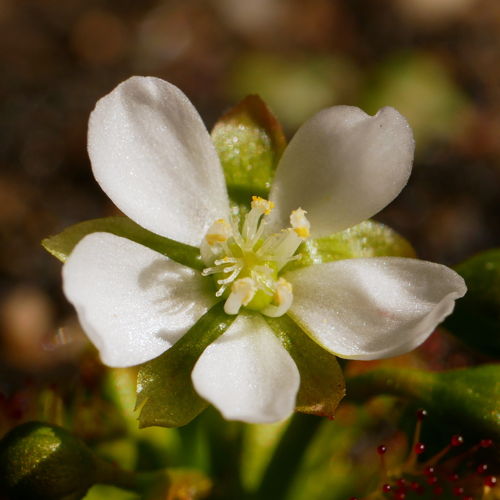
Drosera ramellosa. Photo © Thilo Krueger.
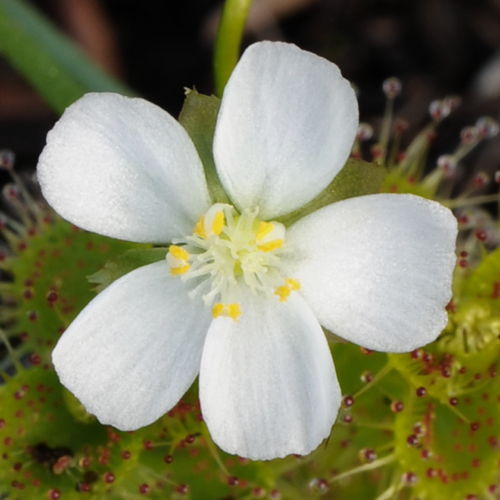
Drosera ramellosa. Photo © Richard Nunn.
Drosera reflexa G.Bourke & A.S.Rob.
The specific epithet is derived from the Latin reflexus (=turned back or away) and refers to the often strongly reflexed (by up to ca. 140–170° with respect to the floral axis) sepals and petals.
Western Australia - Kentdale between Walpole and Denmark near the south Coast.
Occurs in shallow decomposed granitic soils over granite lenses in mosses.
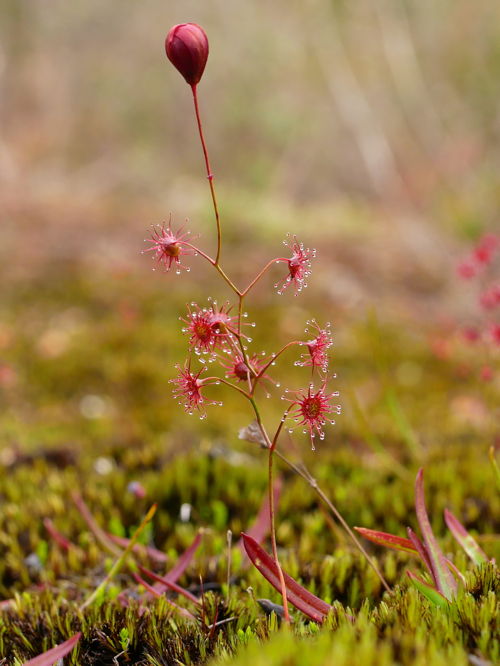
Drosera reflexa. Photo © Thilo Krueger.
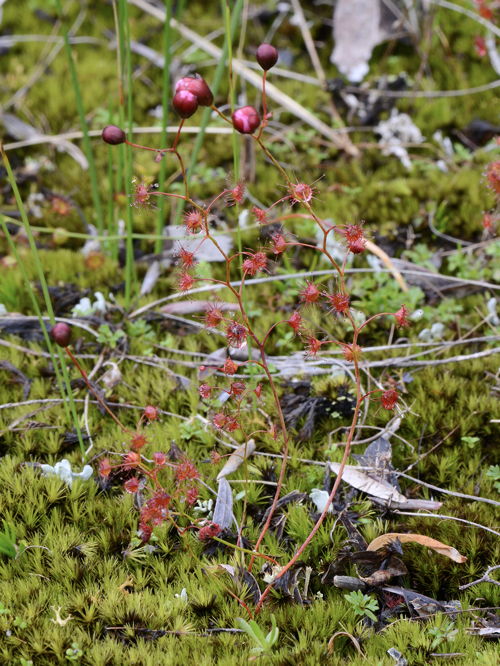
Drosera reflexa. Photo © Richard Nunn.
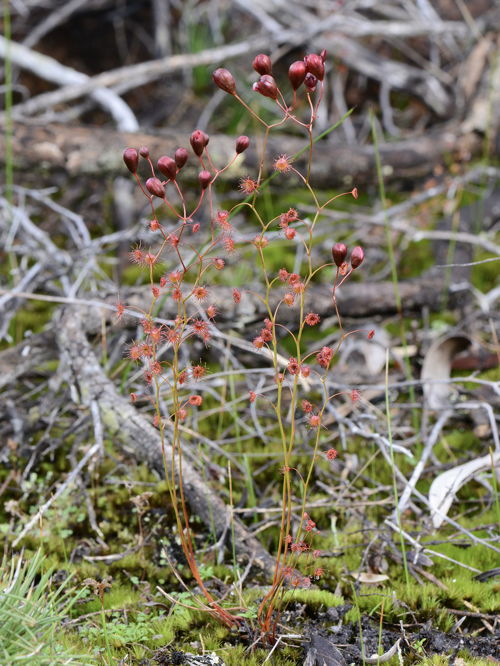
Drosera reflexa. Photo © Richard Nunn.
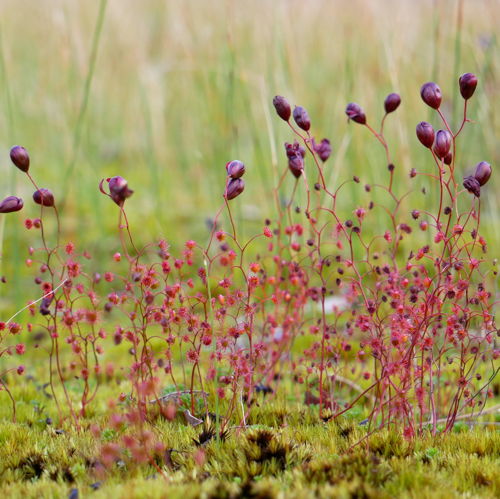
Drosera reflexa. Photo © Thilo Krueger.
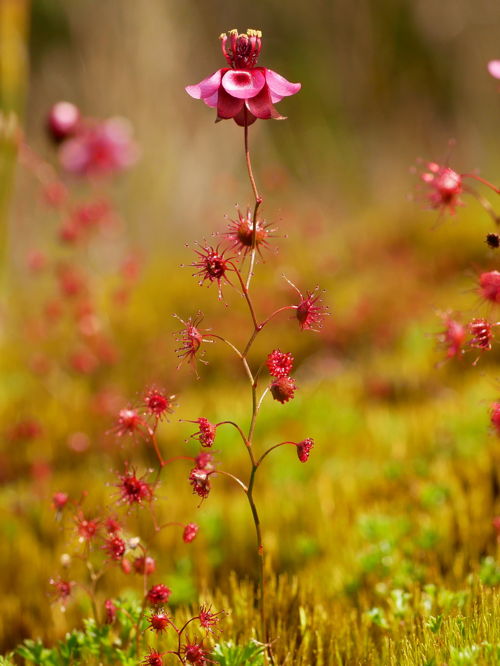
Drosera reflexa. Photo © Thilo Krueger.
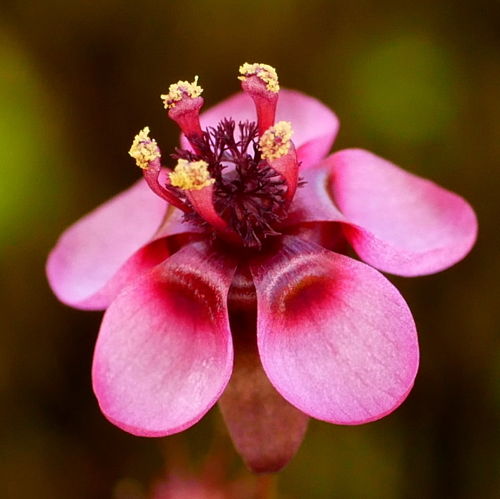
Drosera reflexa. Photo © Thilo Krueger.
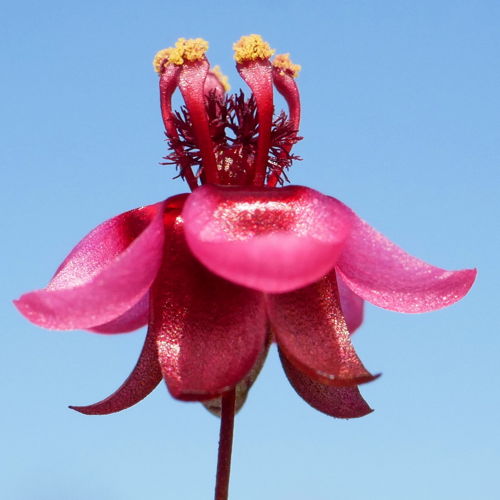
Drosera reflexa. Photo © Thilo Krueger.
Drosera rosulata Lehm.
The epithet, rosulata, is derived from the Latin rosulatus (forming a small rosette).
Western Australia – Perth; Pinjarra; Yarloop; Busselton.
Grows in peaty sand on the margins of winter-wet swamp flats of the west coastal plain, and in loam soils on the slopes of winter-wet watersheds of the Darling Range, east of Perth. All locations dry out completely by summer.
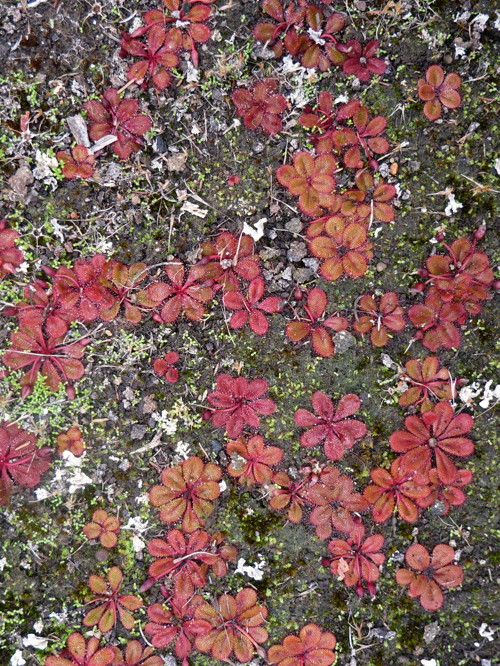
Drosera rosulata. Photo © Thilo Krueger.
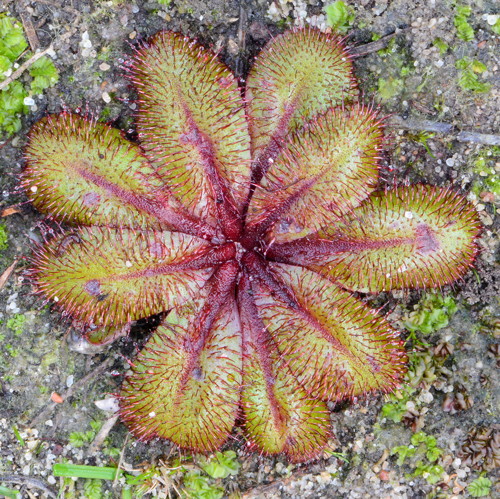
Drosera rosulata. Photo © Richard Nunn.
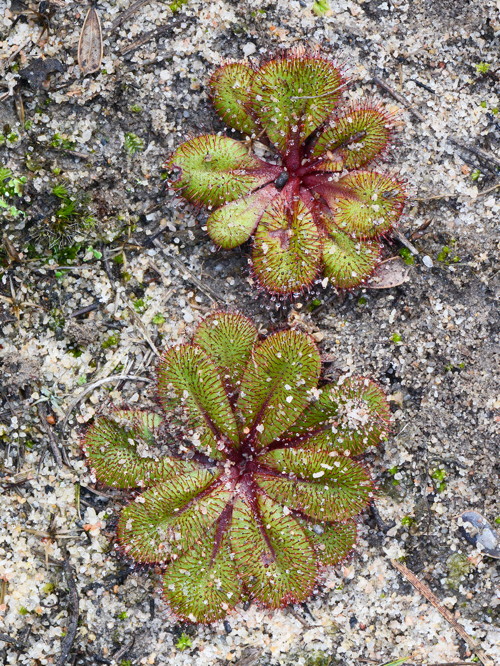
Drosera rosulata. Photo © Richard Nunn.
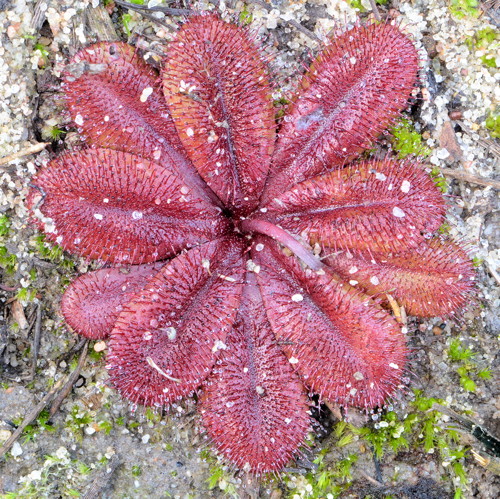
Drosera rosulata. Photo © Richard Nunn.
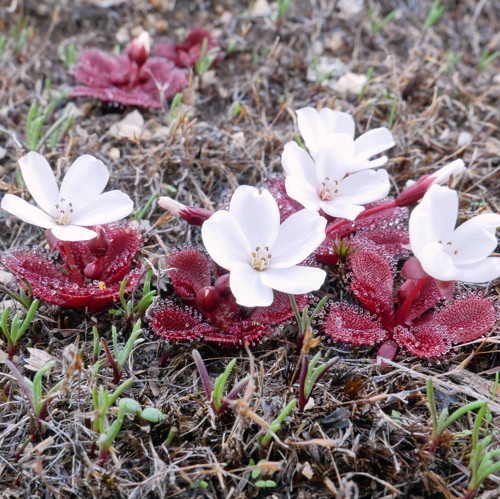
Drosera rosulata. Photo © Thilo Krueger.
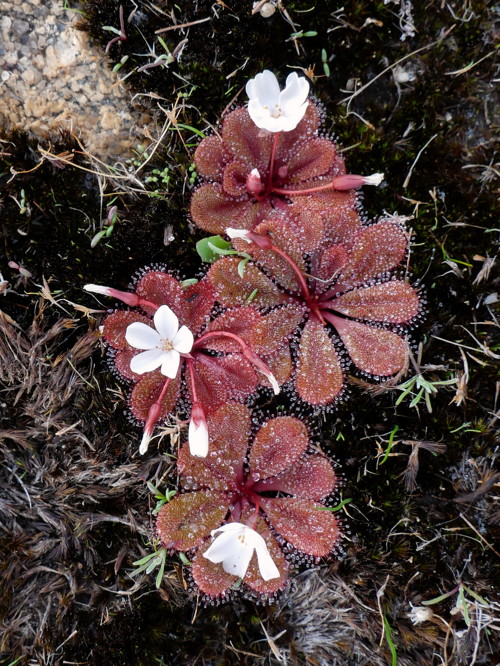
Drosera rosulata. Photo © Thilo Krueger.
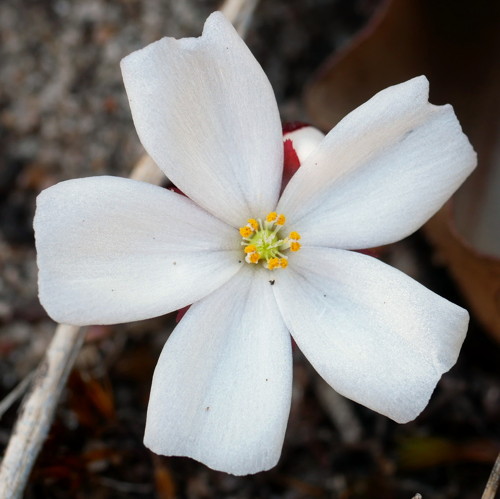
Drosera rosulata. Photo © Thilo Krueger.
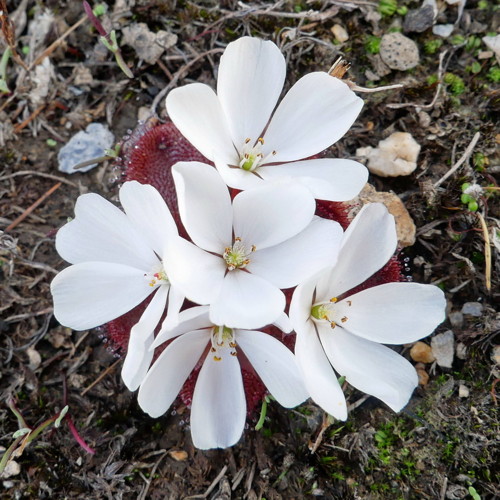
Drosera rosulata. Photo © Thilo Krueger.
Drosera rubricalyx T.Krueger & A.Fleischm.
The specific epithet is derived from the Latin ruber (=red) and calyx in reference to the red sepal colour of this species that provides a distinct colour contrast to the yellowish green stem and peduncle.
Drosera rubricalyx is known only from Lesueur National Park and a population in the same general vicinity. Both sites are located near the coastal town of Jurien Bay, ca. 200 km north of Perth.
Occurs in low heath in poorly drained, seasonally moist flats, depressions, and hillslopes with Calothamnus quadrifidus (Myrtaceae) and Drosera gigantea.
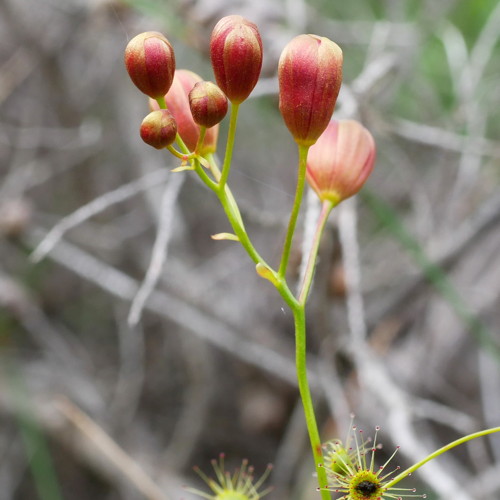
Drosera rubricalyx. Photo © Thilo Krueger.
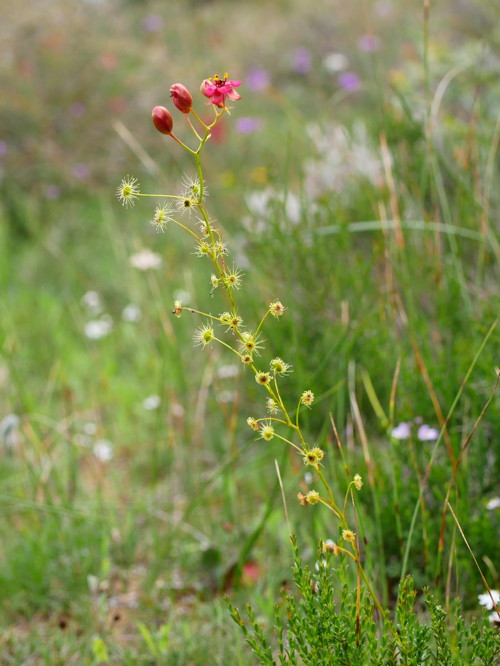
Drosera rubricalyx. Photo © Thilo Krueger.
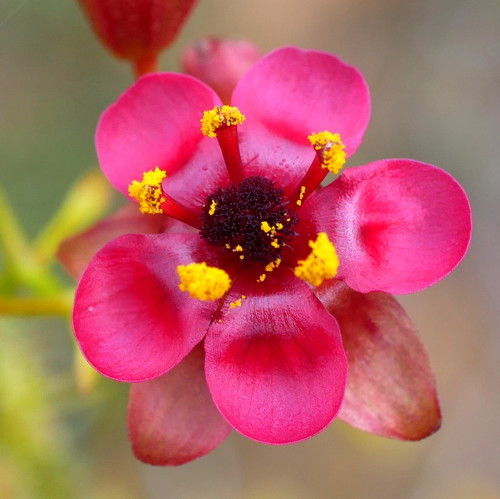
Drosera rubricalyx. Photo © Thilo Krueger.
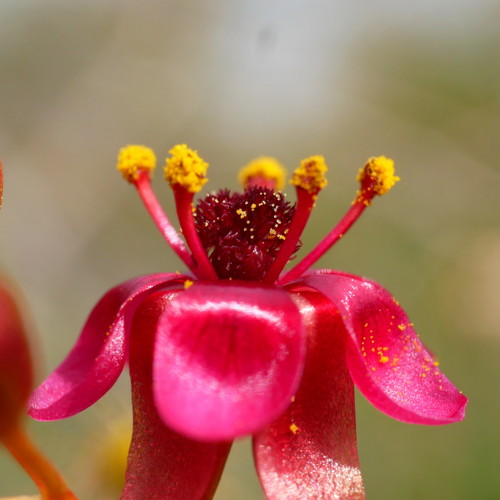
Drosera rubricalyx. Photo © Thilo Krueger.
Drosera rupicola (N.G.Marchant) Lowrie
From the Latin rupes (rock) and the suffix -cola (dweller), in reference to its preferred granite outcrop habitat.
Western Australia – known on inland granite outcrops from Pithara to southeast of Hyden.
Grows in loam soil washes on the aprons of granite outcrops.
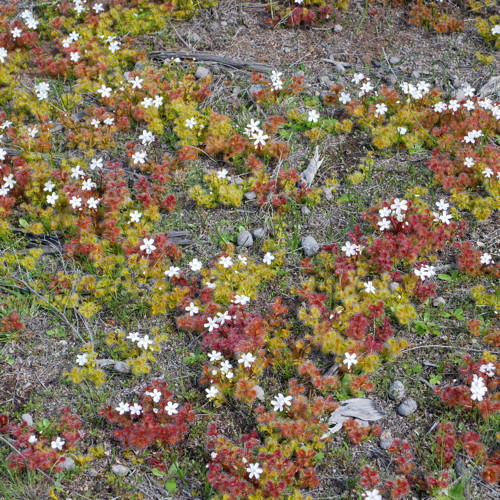
Drosera rupicola. Photo © Thilo Krueger.
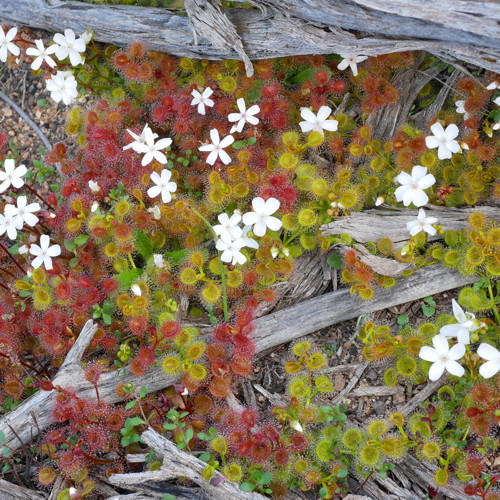
Drosera rupicola. Photo © Thilo Krueger.
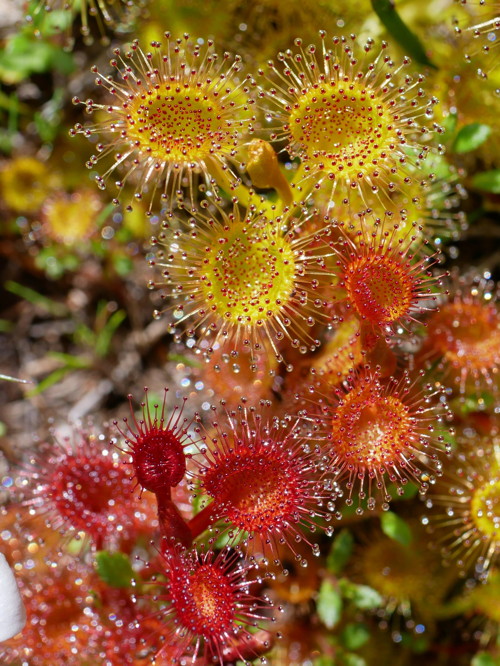
Drosera rupicola. Photo © Thilo Krueger.
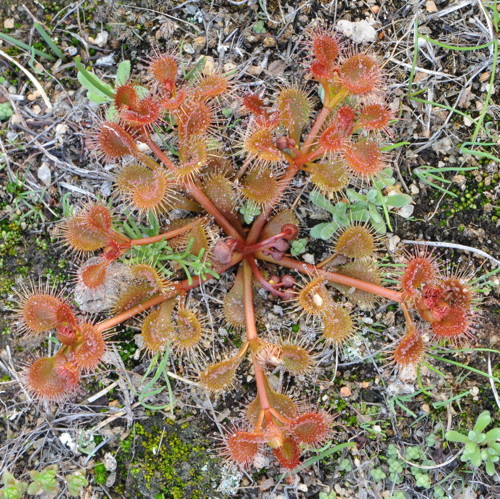
Drosera rupicola. Photo © Richard Nunn.
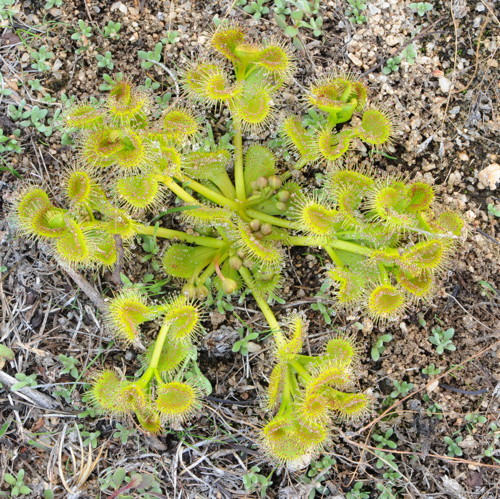
Drosera rupicola. Photo © Richard Nunn.
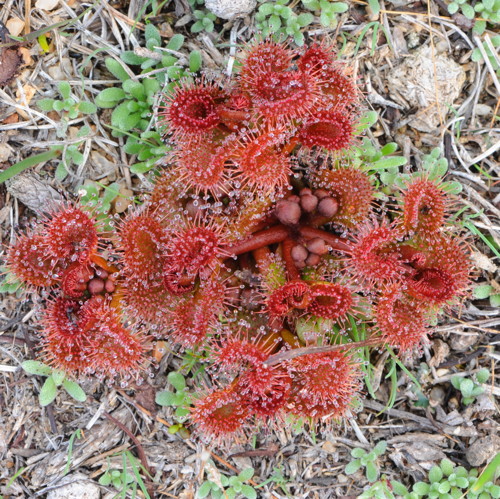
Drosera rupicola. Photo © Richard Nunn.
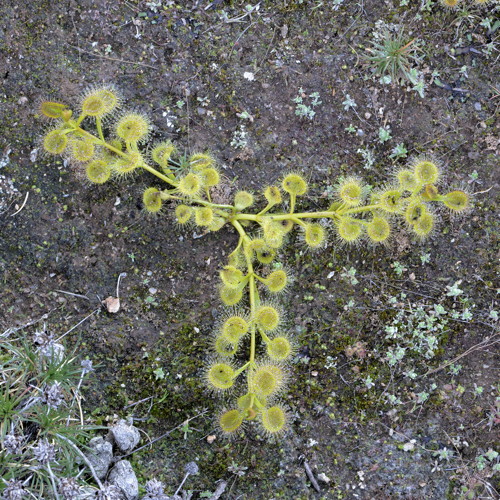
Drosera rupicola. Photo © Richard Nunn.
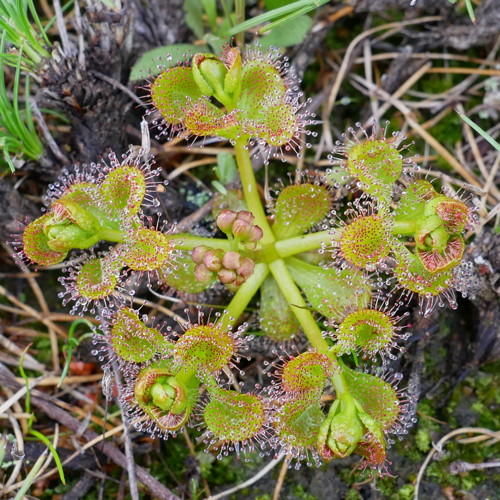
Drosera rupicola. Photo © Thilo Krueger.
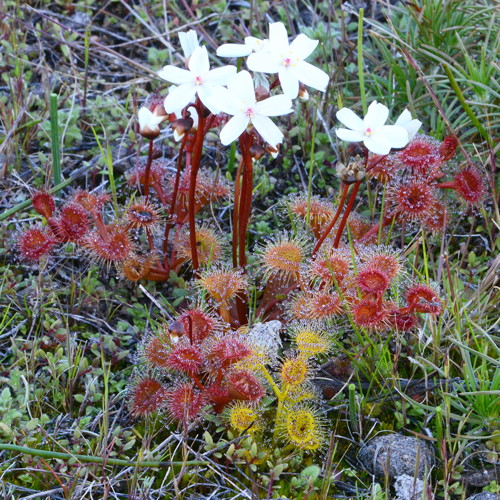
Drosera rupicola. Photo © Richard Nunn.
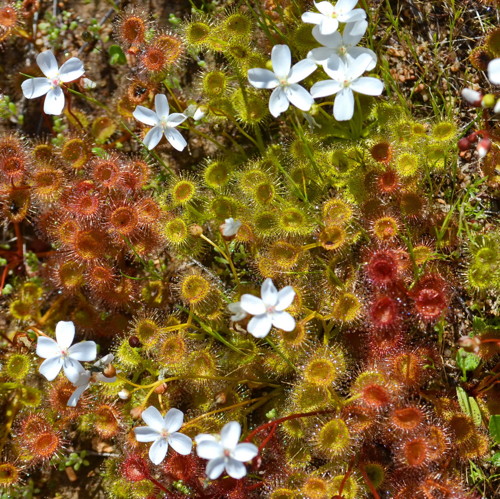
Drosera rupicola. Photo © Thilo Krueger.
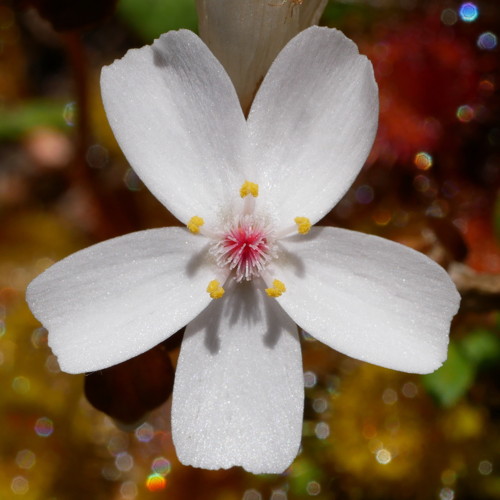
Drosera rupicola. Photo © Thilo Krueger.
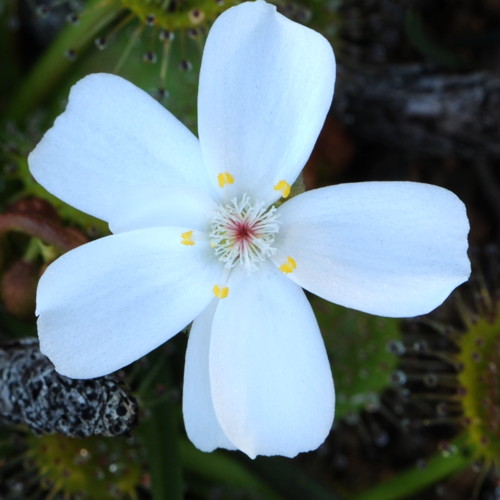
Drosera rupicola. Photo © Richard Nunn.
Drosera salina N.G.Marchant & Lowrie
The epithet, salina, is derived from the Latin salinus (saline), a reference to the fact that this species is only ever found growing in (salt-free) soils on the shores of salt lakes in southwest Western Australia.
Western Australia – Lake Seabrook; north, east and west of Lake King.
Grows on the margins of salt lakes in salt-free water, in rain-washed, white sand almost at the edge of the water.
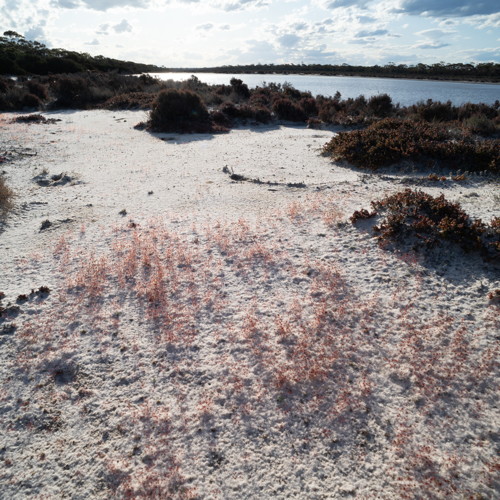
Drosera salina. Photo © Boaz Ng.
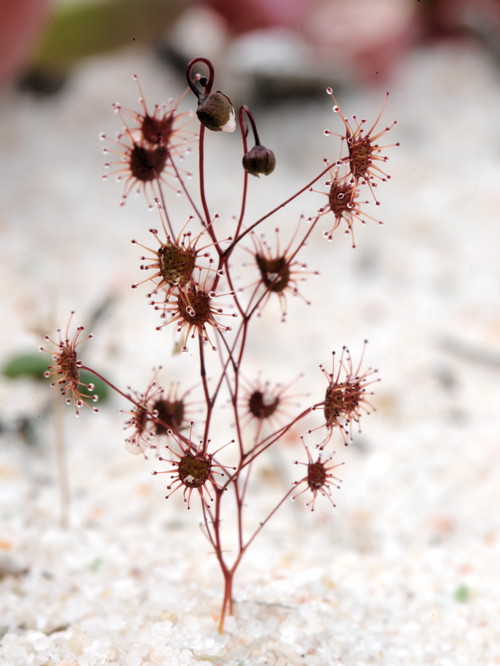
Drosera salina. Photo © Richard Nunn.
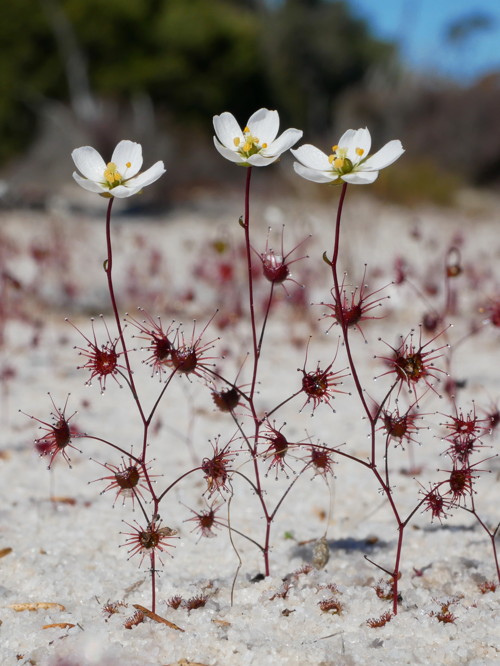
Drosera salina. Photo © Thilo Krueger.
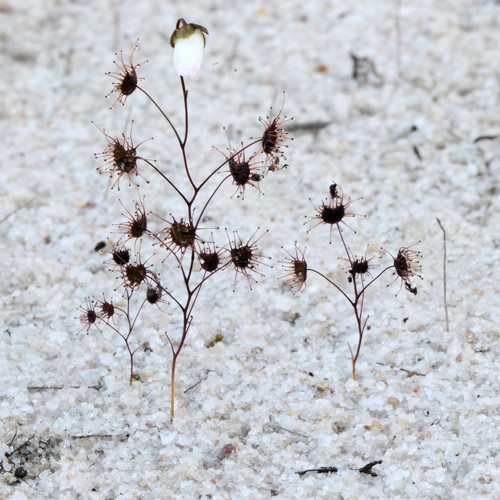
Drosera salina. Photo © Richard Nunn.
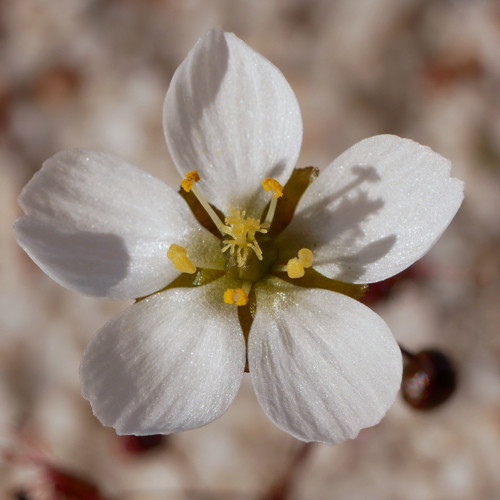
Drosera salina. Photo © Thilo Krueger.
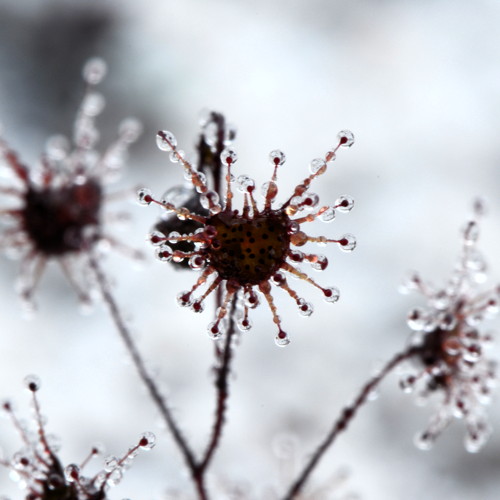
Drosera salina. Photo © Richard Nunn.
Drosera schmutzii Lowrie & Conran
The epithet, schmutzii, honours Fr. Erwin Schmutz, SVD of the German Catholic Centre in Collinswood, South Australia, who discovered this species.
South Australia – endemic to Kangaroo Island.
Grows at the type location in buff yellow, sandy clay with laterite pebbles, with underlying sandstone rock, in open, sunny areas amongst Allocasuarina muelleriana. Also grows in red, iron and aluminium-rich clay with iron rich gravels known as pisoliths (pea-like stones); Macgillvray white sands (derived from dune sands) with laterite intrusions; as well as in sandy soils in small, shallow gnamma holes in sheet limestone cap rock overlooking the ocean.
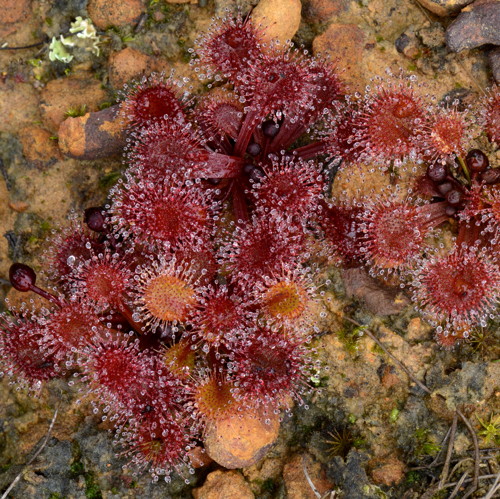
Drosera schmutzii. Photo © Richard Nunn.
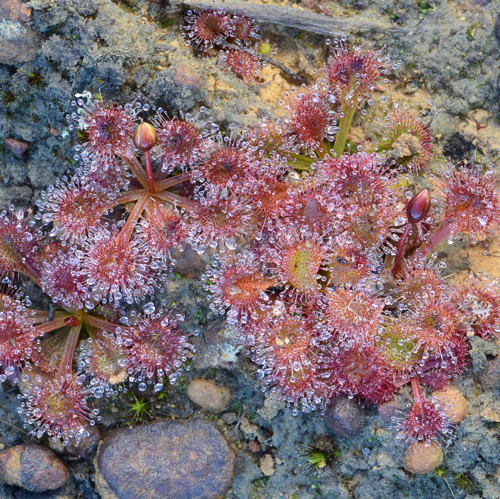
Drosera schmutzii. Photo © Richard Nunn.
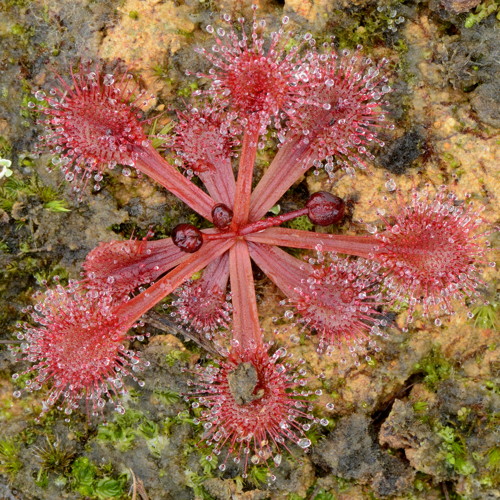
Drosera schmutzii. Photo © Richard Nunn.
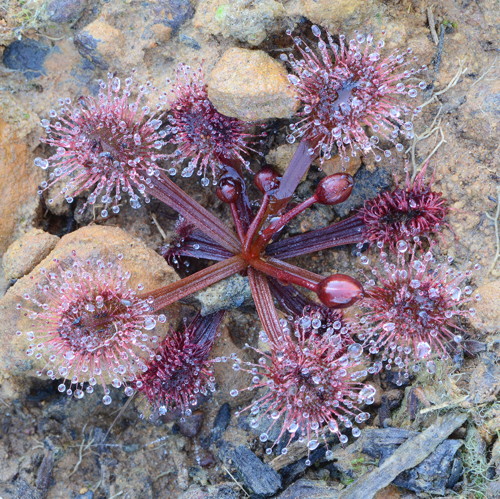
Drosera schmutzii. Photo © Richard Nunn.
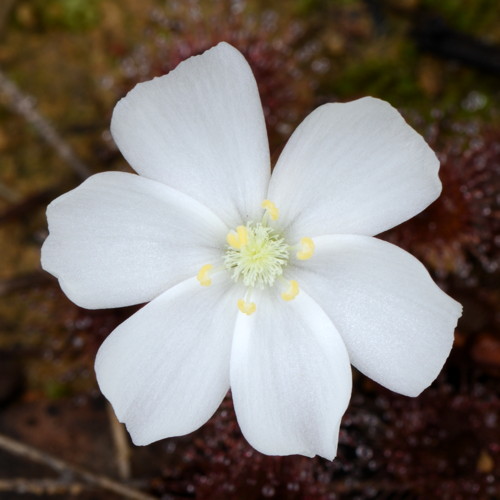
Drosera schmutzii. Photo © Richard Nunn.
Drosera squamosa Benth.
The epithet, squamosa, is derived from the Latin squamosus (covered in scales), in reference to the subulate, bract-like scales present at the base of the peduncle during anthesis, well before the basal rosette of leaves begins to develop.
Western Australia – (sand growing specimens) Yarloop; Coolup; Quaalup, West Mt Barren; Hopetoun; (laterite and silica sand growing specimens) various locations scattered throughout the forest in the Darling Range, east of Perth.
Grows in black peaty sand on the margins of swamps, and in laterite and silica soils in Eucalyptus forest.
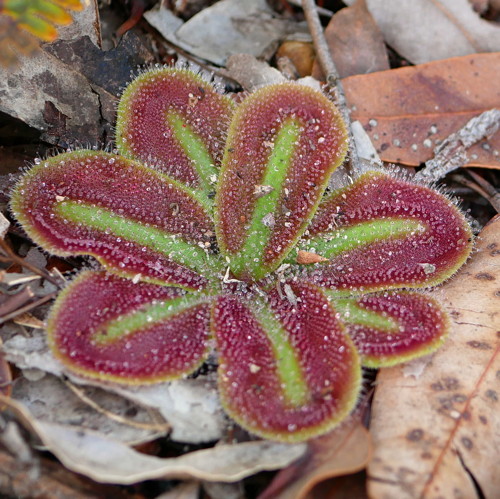
Drosera squamosa. Photo © Thilo Krueger.
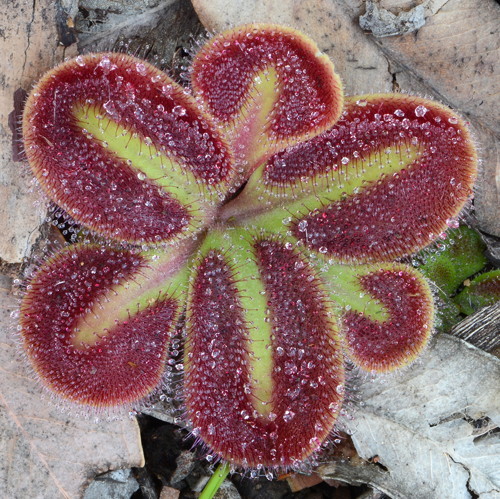
Drosera squamosa. Photo © Richard Nunn.
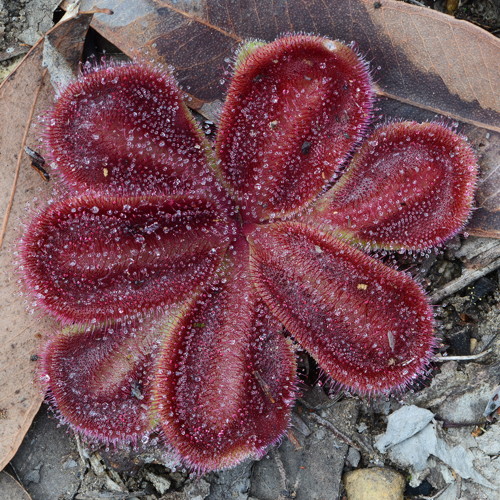
Drosera squamosa. Photo © Richard Nunn.
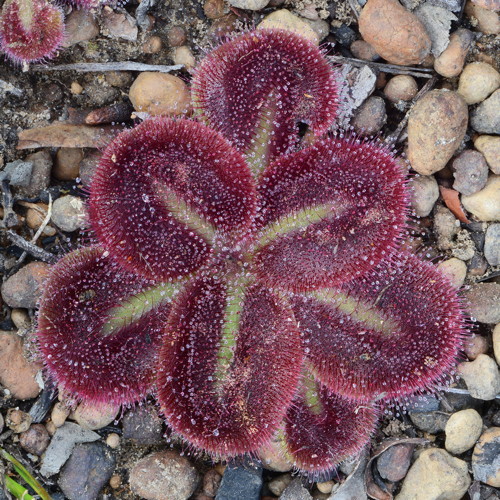
Drosera squamosa. Photo © Richard Nunn.
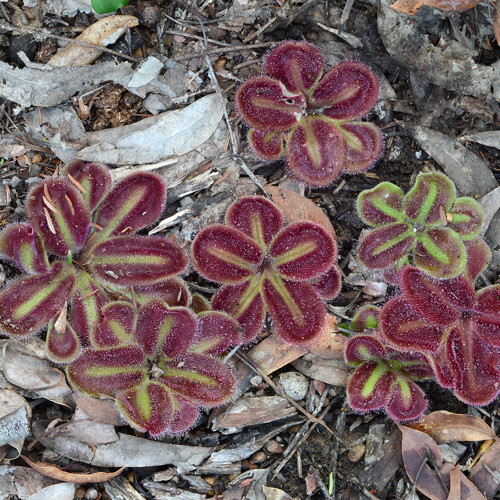
Drosera squamosa. Photo © Richard Nunn.
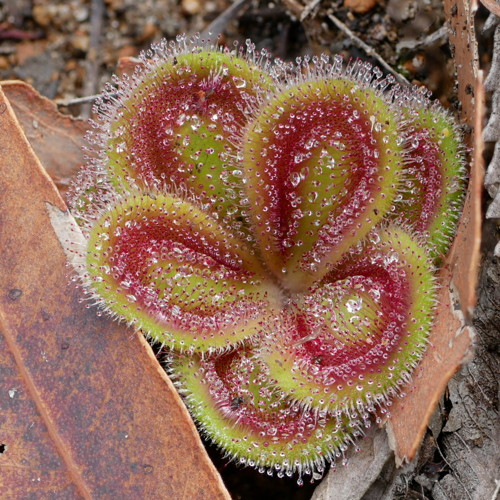
Drosera squamosa. Photo © Thilo Krueger.
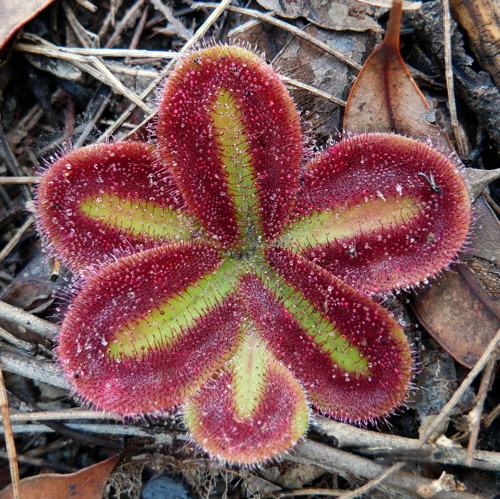
Drosera squamosa. Photo © Thilo Krueger.
Drosera stolonifera Endl.
From the Latin stolonis (stolon) and fero (to bear, carry), in reference to the fleshy root (stolon) between the tuber and the basal rosette of foliage.
W.A. – known populations of Drosera stolonifera can still be found in undeveloped, swampy locations southwards from Perth to Pinjarra, and northwards from Perth to Boonanarring.
Grows in black, peaty sand in swamp heathland with paperbark trees (Melaleuca).
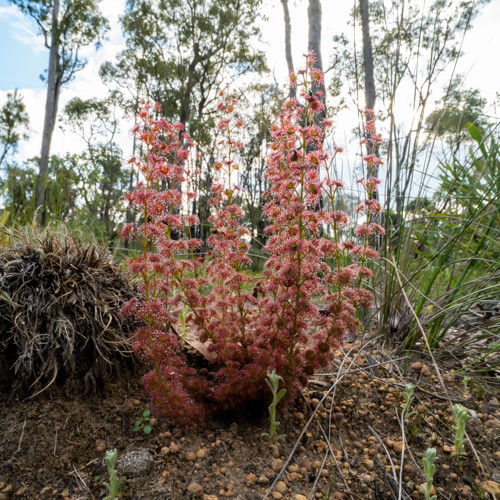
Drosera stolonifera. Photo © Boaz Ng.
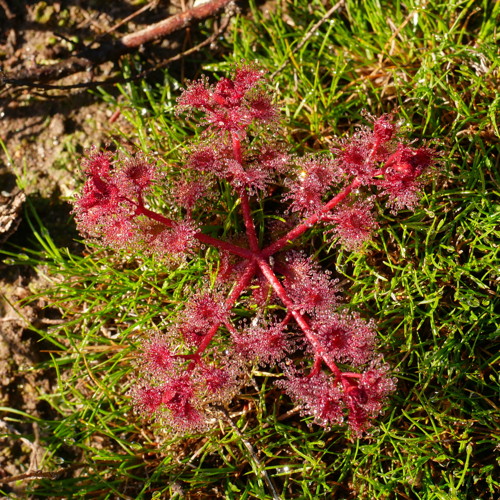
Drosera stolonifera. Photo © Thilo Krueger.
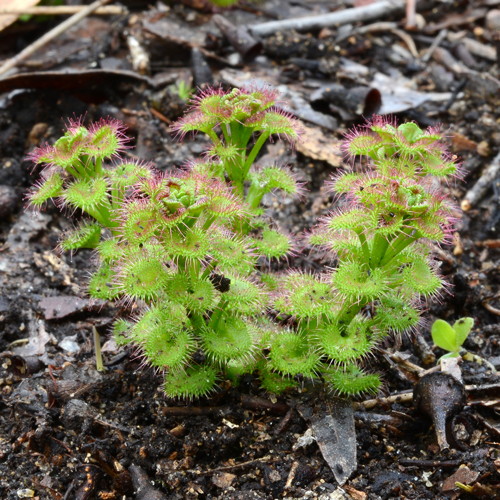
Drosera stolonifera. Photo © Richard Nunn.
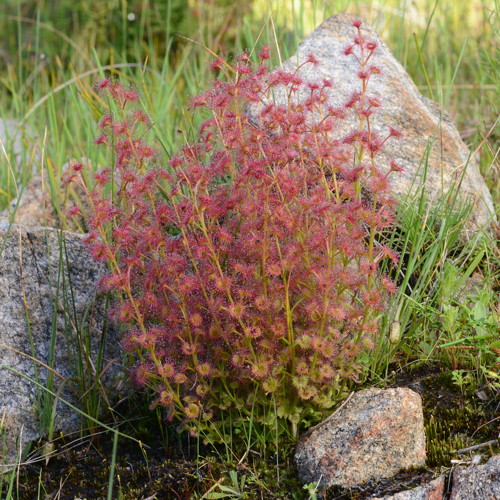
Drosera stolonifera. Photo © Richard Nunn.
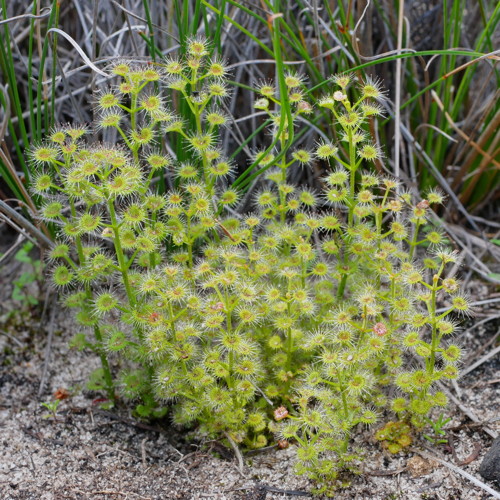
Drosera stolonifera. Photo © Thilo Krueger.
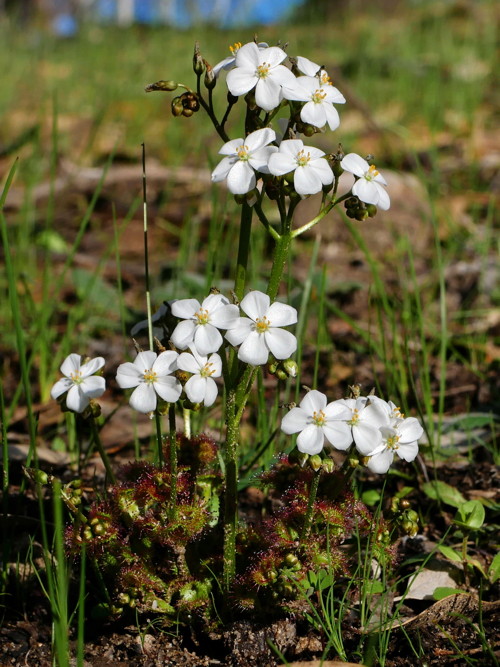
Drosera stolonifera. Photo © Thilo Krueger.
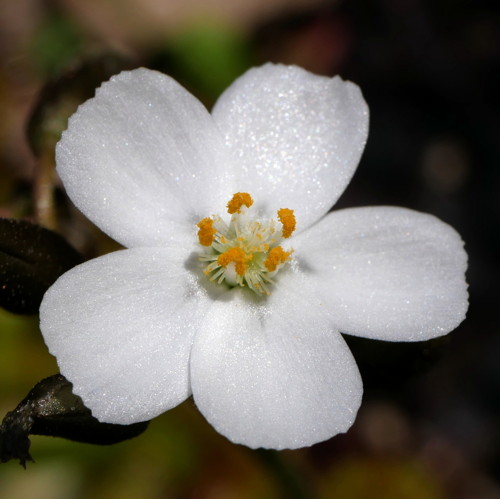
Drosera stolonifera. Photo © Thilo Krueger.
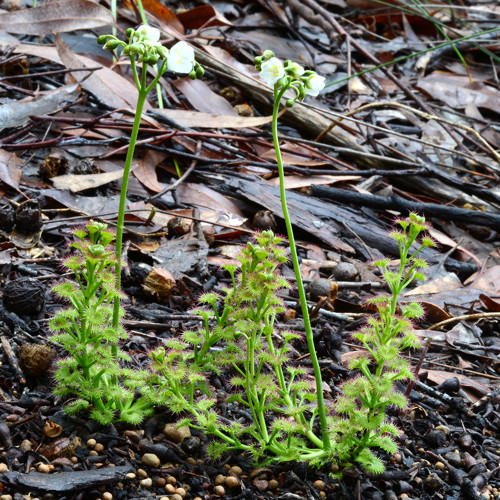
Drosera stolonifera. Photo © Richard Nunn.
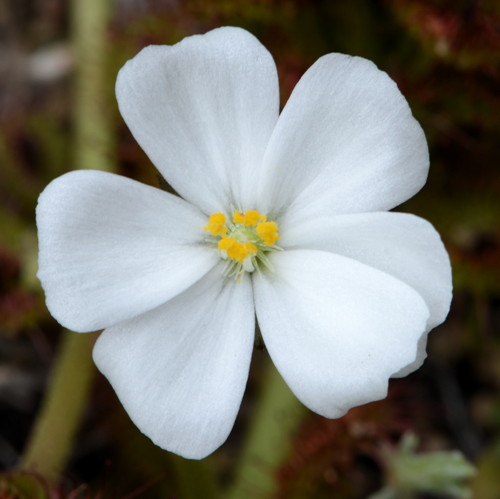
Drosera stolonifera. Photo © Richard Nunn.
Drosera stricticaulis (Diels) O.H.Sargent
The epithet, stricticaulis, is named from the Latin strictus (straight, erect and rigid) and caulis (stem), in reference to its robust, self-supporting, erect major axis.
Western Australia – Bolgart; Clackline; Corrigin; Eneabba; Hillman; Hyden; Katanning; Kojonup; Pingelly; Tammin; Toodyay; Westonia; Wongan Hills. South Australia – Edilillie; Wanilla; Port Lincoln.
Grows in sandy clay in and along water courses; winter-wet swampland flats; loam washes on granite outcrops.
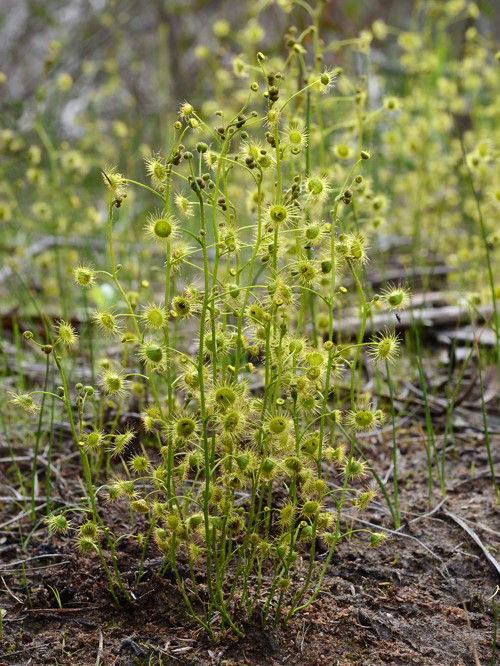
Drosera stricticaulis. Photo © Richard Nunn.
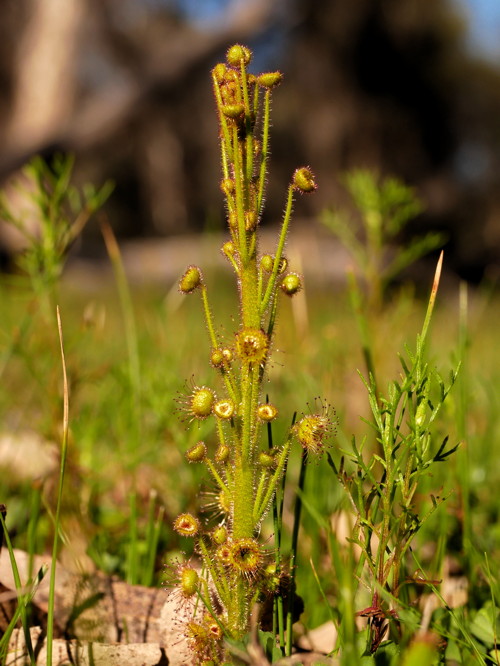
Drosera stricticaulis. Photo © Thilo Krueger.
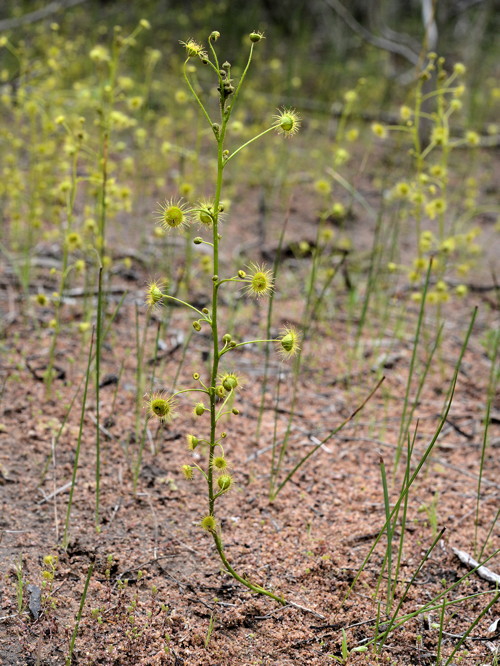
Drosera stricticaulis. Photo © Richard Nunn.
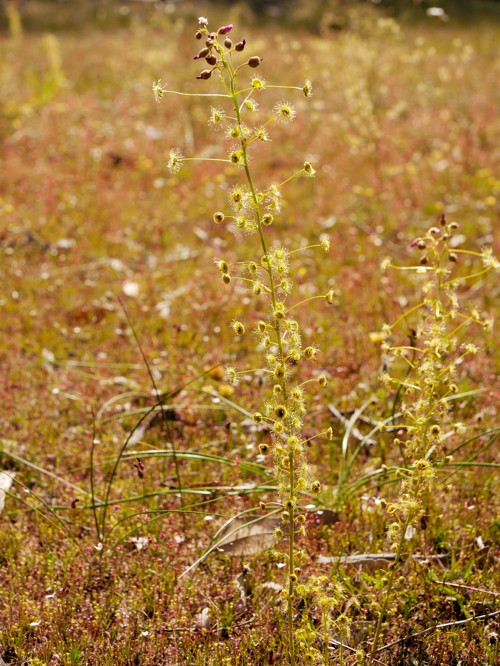
Drosera stricticaulis. Photo © Thilo Krueger.
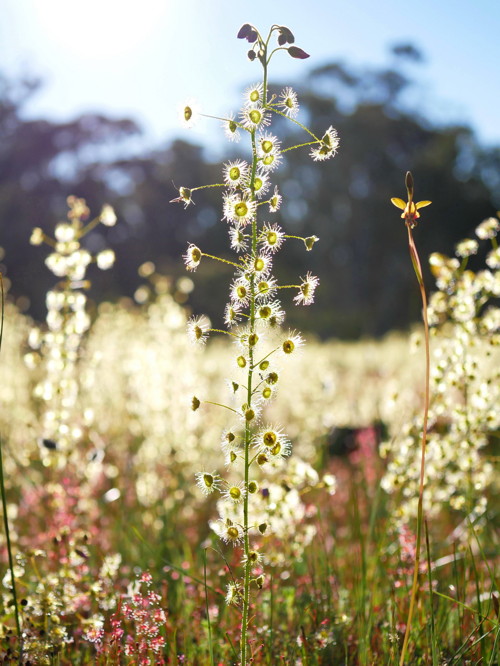
Drosera stricticaulis. Photo © Thilo Krueger.
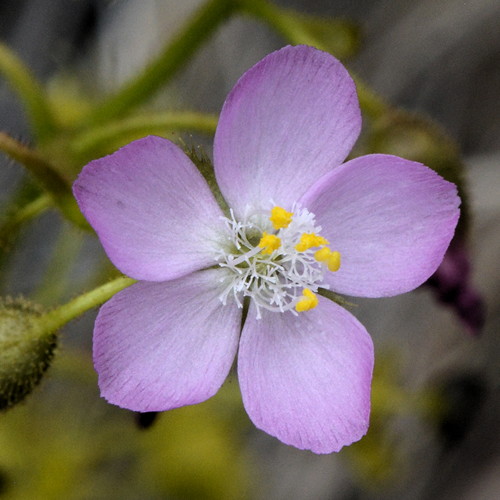
Drosera stricticaulis. Photo © Richard Nunn.
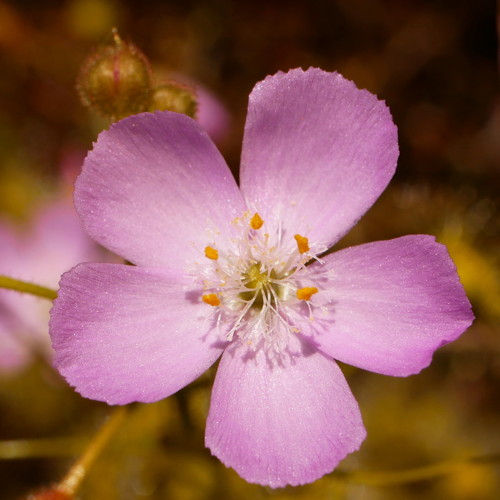
Drosera stricticaulis. Photo © Thilo Krueger.
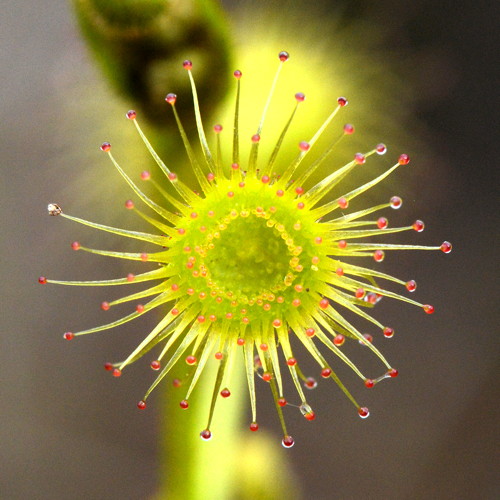
Drosera stricticaulis. Photo © Richard Nunn.
